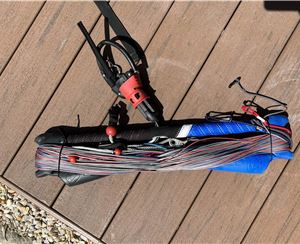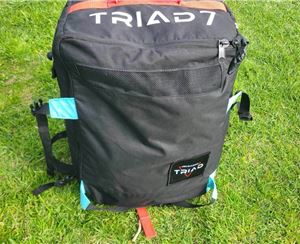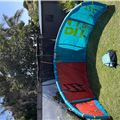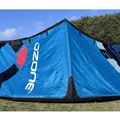How does this 'backwards' kite foil work?!

They call it the Spitfire, and say that it offers 'carving potential above standard'. To most kite foilers, it looks like it's completely backwards.
Most kite foils, have the big wing at the front, a mast which intersects just behind the big wing, then a long fuselage and little stabiliser at the back. Just like an aeroplane - big wing at the front, stabiliser at the back.
This one, has a big wing at the BACK, and the mast at the back. And a little stabiliser at the FRONT! Some aeroplanes do this too, and it's called a Canard configuration. Renowned for its safety, the canard is a niche design in aviation which hasn't really caught on. Will it be the next big thing in hydrofoils though?
So how does it work? Well the basics are exactly the same, the main wing lifts, the stabiliser stabilises. Except with a canard, the stabiliser provides lift. So both the foils are providing lift, which seems efficient right? With a conventional foil, the stabiliser actually pulls the tail of the foil down to provide its stabilising effect. This means it's pulling the foil back down, contrary to the whole point of a foil.
There's a whole heap of other little intricacies of canards that are well documented in aviation, but overall the complexity is outweighed by the benefits. When it comes to foils however, which use weight shift to rid the foil of moving parts - the canard might actually work!
















